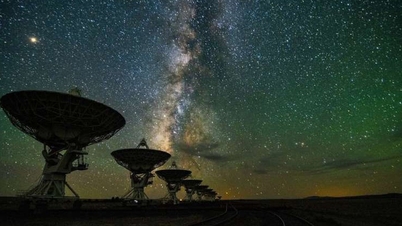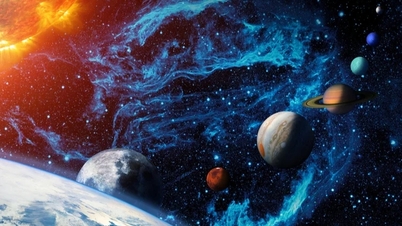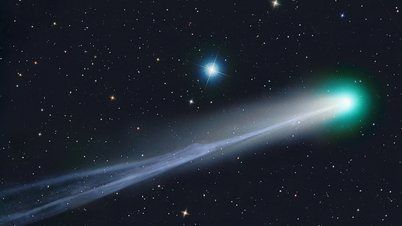
According to research published in the journal Nature Astronomy, the explosion originated from an active galactic nucleus, the glowing center of a galaxy where a giant black hole is devouring surrounding gas and dust. As matter is sucked into the accretion disk around the black hole, it is heated to millions of degrees, emitting intense radiation.
The research team believes that the black hole swallowed a star with a mass at least 30 times that of the Sun, creating this giant flare. “Only about 1 in 10,000 galactic nuclei experience flares, but this level is so rare that it only happens once in millions of events,” said Professor Matthew Graham (California Institute of Technology, USA) - lead author of the study.
The “Superman” black hole was first discovered in 2018 at Palomar Observatory (California, USA) through the Zwicky Relay Facility automated observation system. Initially, scientists thought this was a black hole emitting high-energy rays. However, after reanalyzing the data many years later, they found that this light source was 30 times more powerful than any flare ever recorded.
Observations from the Keck Telescope in Hawaii show that the black hole has a mass 500 million times that of the Sun. The phenomenon is identified as a tidal disruption event, when a star passes too close to the black hole and is torn apart by its intense gravity.
Previously, the record for the brightest tidal disruption belonged to the “Scary Doll” phenomenon, but “Superman” surpassed it by far, becoming the brightest star swallowing event in the history of cosmic observations.
Experts say the discovery helps us better understand how black holes grow, interact with surrounding stars, and influence galaxy formation. Because the light from the explosion took 10 billion years to reach Earth, we are actually witnessing an event that occurred in the early universe.
Professor Alex Filippenko (University of California, Berkeley) commented: "When a black hole suddenly glows so brightly, it is a rare opportunity for humans to observe the most extreme physical phenomena in the universe."
Source: https://daidoanket.vn/vu-no-ho-den-phat-sang-bang-10-nghin-ty-mat-troi.html



![[Photo] Prime Minister Pham Minh Chinh chairs a meeting on housing policy and the real estate market.](https://vphoto.vietnam.vn/thumb/1200x675/vietnam/resource/IMAGE/2025/11/11/1762838719858_dsc-2107-jpg.webp)
![[Photo] Chu Noodles - the essence of rice and sunshine](https://vphoto.vietnam.vn/thumb/1200x675/vietnam/resource/IMAGE/2025/11/11/1762846220477_ndo_tl_7-jpg.webp)






























































































![Dong Nai OCOP transformation: [Article 4] Reaching national standard products](https://vphoto.vietnam.vn/thumb/402x226/vietnam/resource/IMAGE/2025/11/11/1762825820379_4702-cac-san-pham-trai-cay-chung-nhan-ocop-nongnghiep-174649.jpeg)



![Dong Nai OCOP transition: [Article 3] Linking tourism with OCOP product consumption](https://vphoto.vietnam.vn/thumb/402x226/vietnam/resource/IMAGE/2025/11/10/1762739199309_1324-2740-7_n-162543_981.jpeg)






Comment (0)